Holy Family with Saint John and Elizabeth
Oil on copper, cm 36,3 x 29,5
With frame, cm 47 x 38
The vitreous consistency, glacial in the hardness of the surfaces, identifies in this painting the all Flemish charm to which we must ideation and elaboration. The artist incessantly repeats the modular exercise of structuring surfaces, pausing now to sculpt the muscles of the Child Jesus and Giovan Battista, also children, now to bend sharp edges the smooth robes of Mary, Saint Elizabeth and Joseph. The landscape in the distance, with ocean colors, is cut of luminescence compared to the bright green of the hill on which the characters are resting. The bright yellow of the robes of Joseph and Elizabeth encircles Mother and Son, directing the viewer’s eye on the two main figures. Elizabeth, the Baptist’s mother, encourages her son with a slight touch on his back as he freezes and admires with boundless wonder Jesus, flying over his mother’s leg towards him. The white veil that softens the cradle of the Child is already an allegory of the white shroud of death and Resurrection; the wild herbs isolated by the artist in the right corner of the painting, as well as serving as a filler refer to the bitter herbs eaten by the Savior during the last supper, a traditional Jewish meal. Birth and Resurrection are still implicit narrative vehicles of the painting, examples with perfect golden aureoles as fine as an adult hair and the ray on the head of the Child, material proof of the celestial kingdom.The artist of the present approaches for the formalism of the two children to the Holy Family of Jacob Jordaens today kept at the Royal Museums of Fine Arts of Belgium, moving for the sincere and embracing embrace in which the two cousins The same as what the two present are about to do. The Flemish Rubensian lesson, declared by the Holy Family of the master preserved instead at the Picture Gallery Sanssouci, Prussian Palaces and Gardens Foundation Berlin-Brandenburg of Potsdam in Germany, Witness how the present artist has taken full advantage of the Flemish heritage in proposing, although updated to personal taste, that soft embrace of which Rubens first and Jordaens then made their distinctive mark.



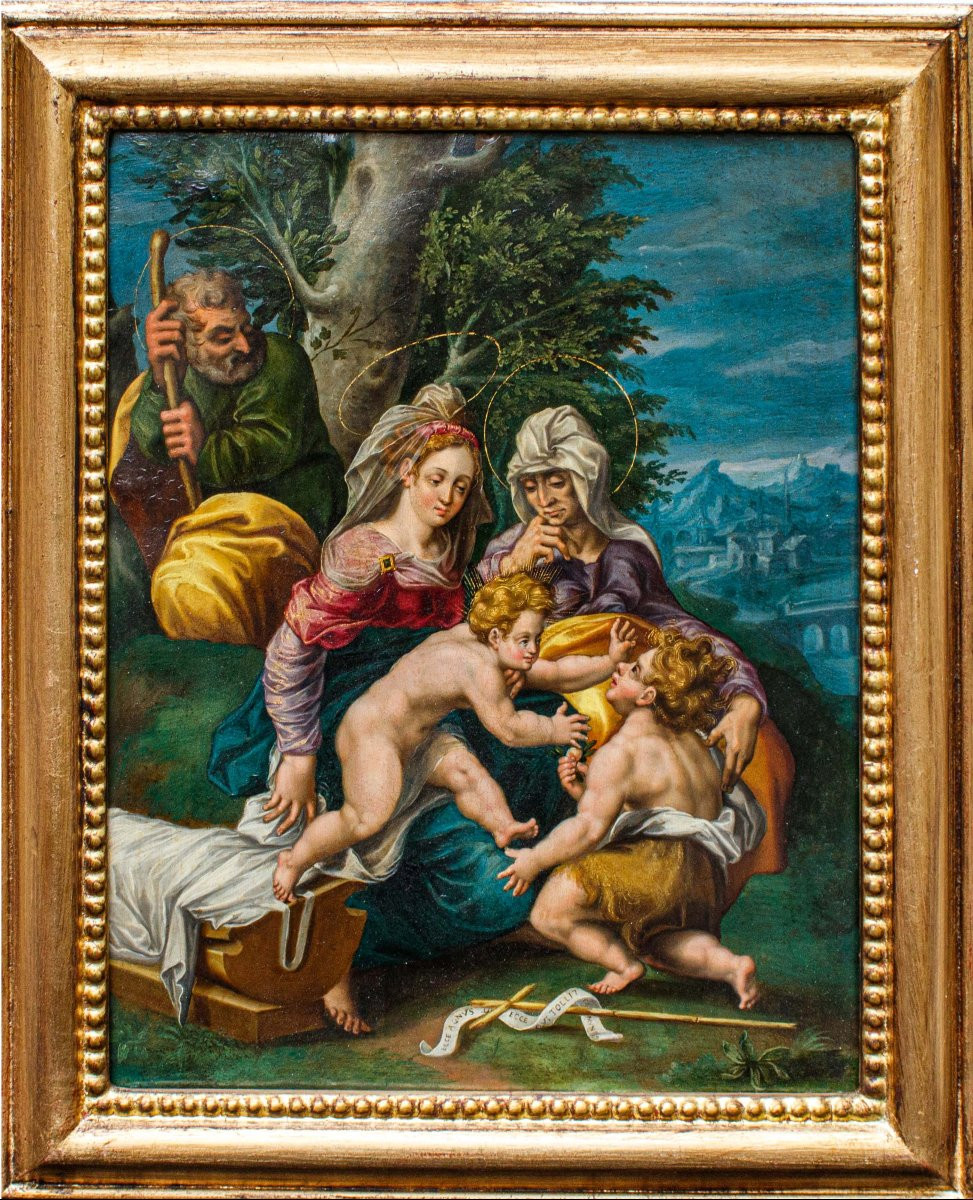

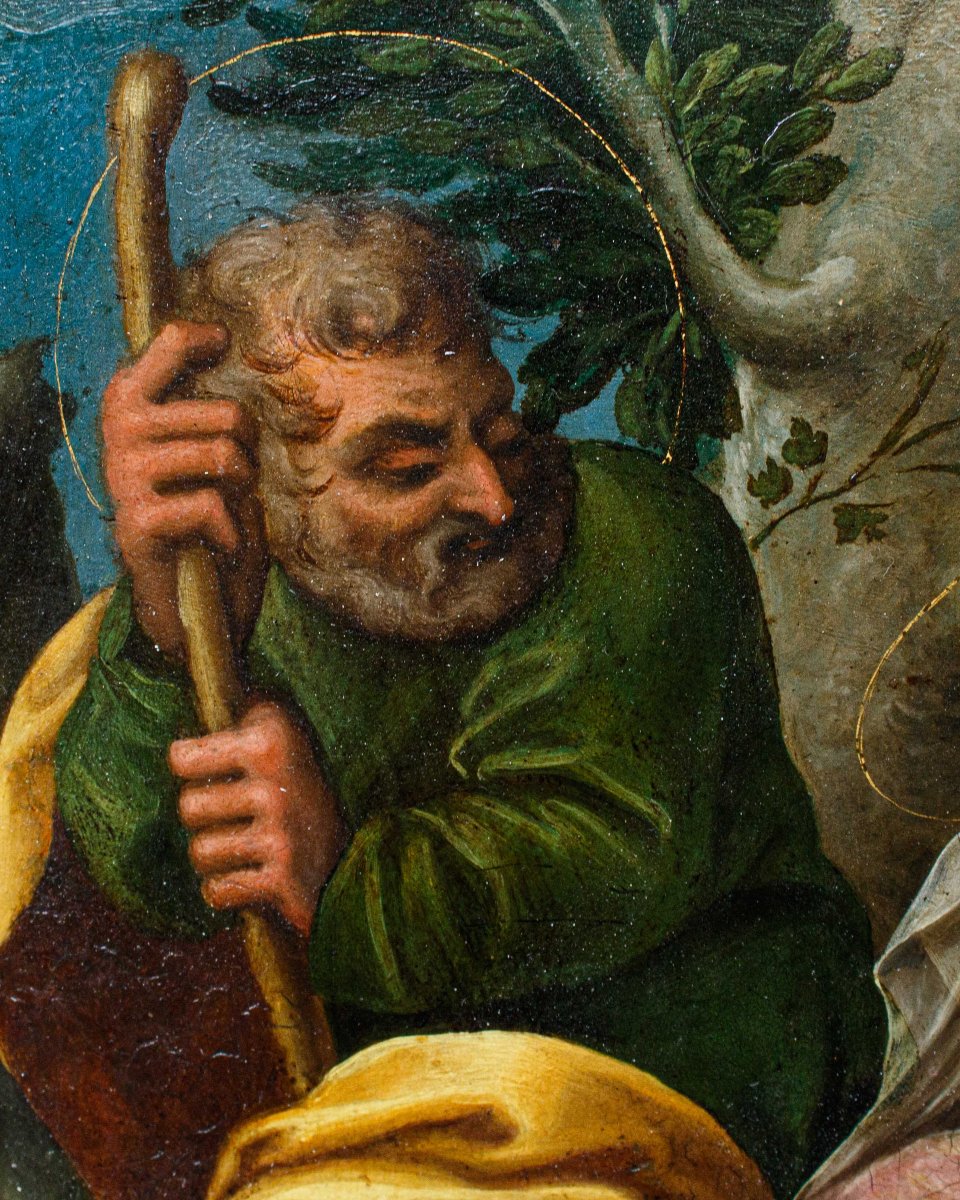
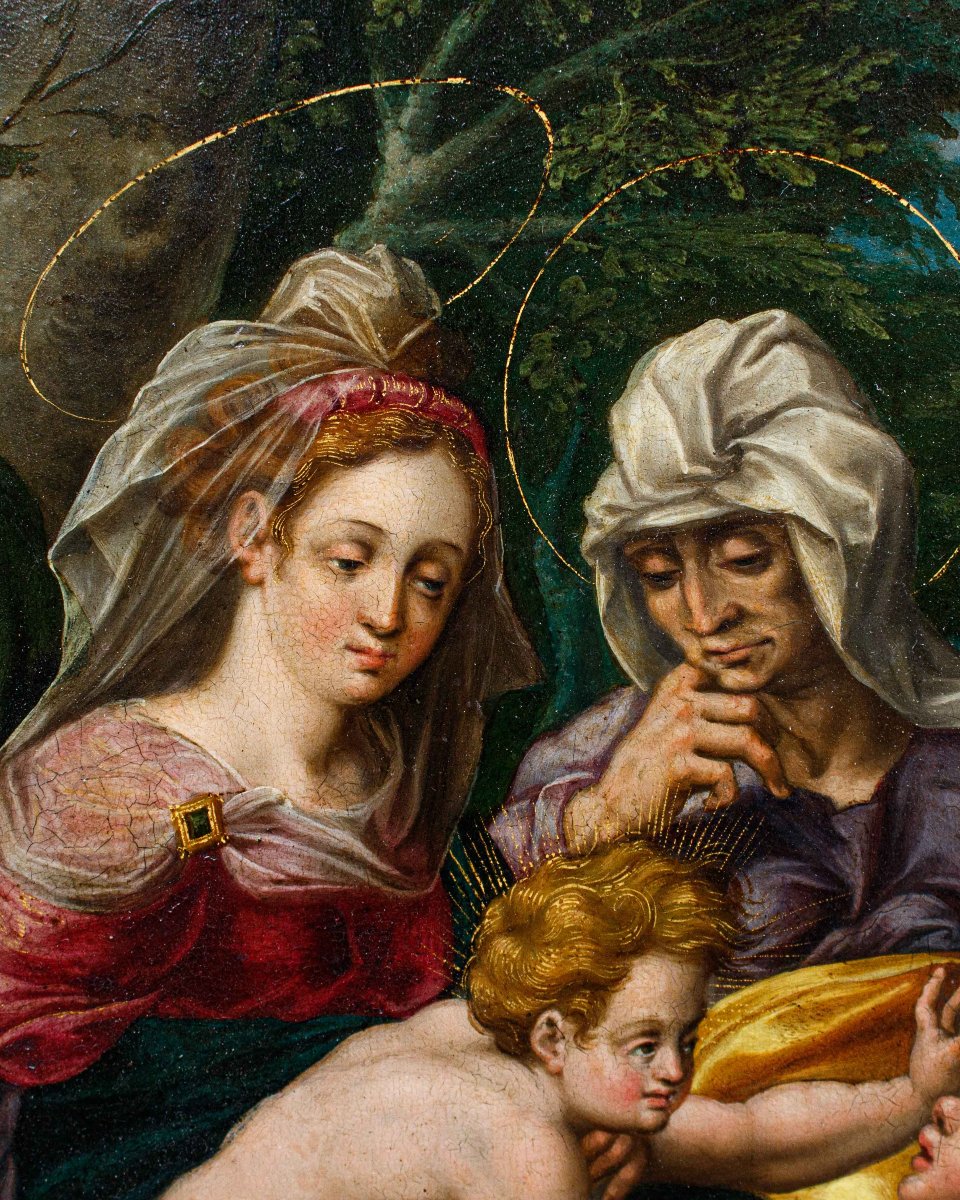


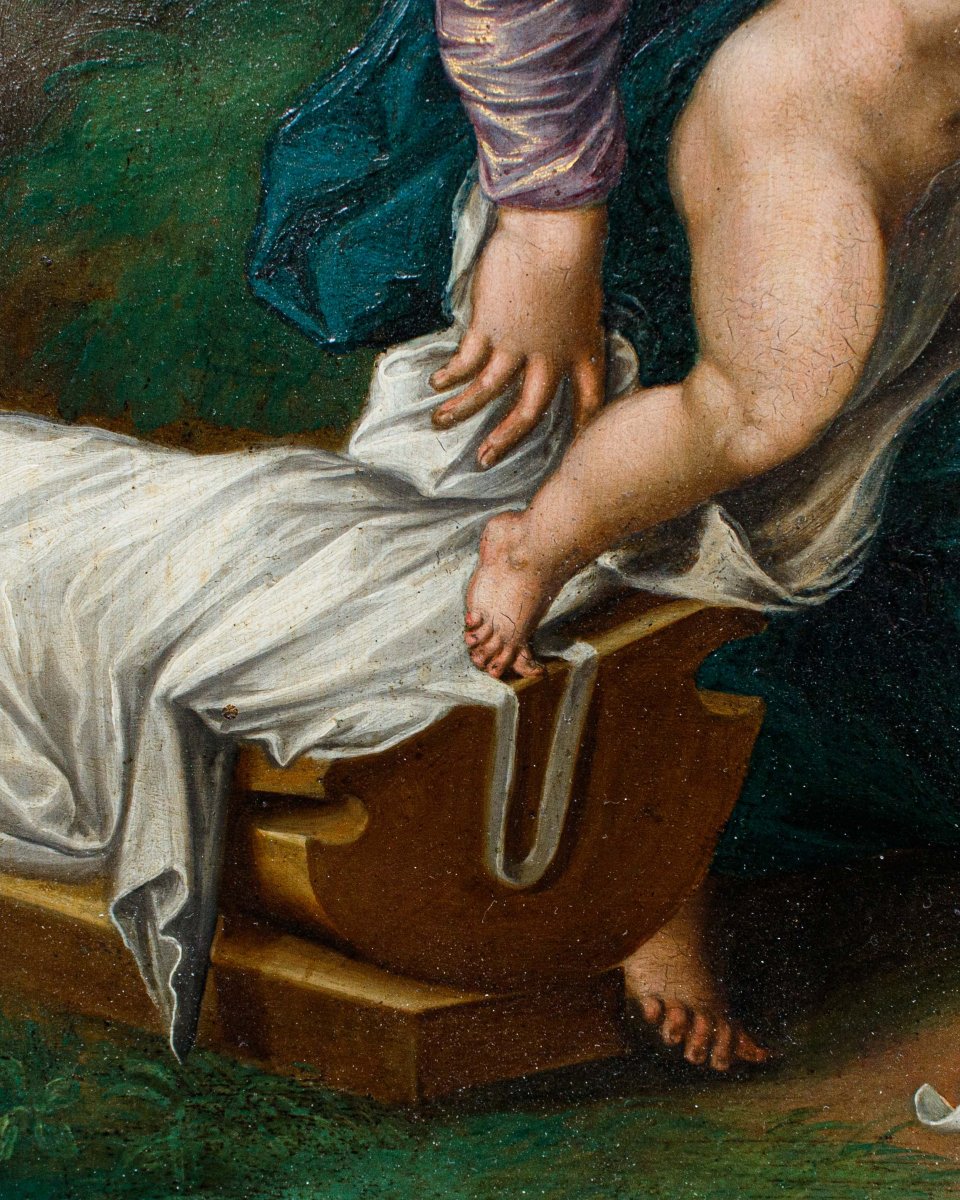
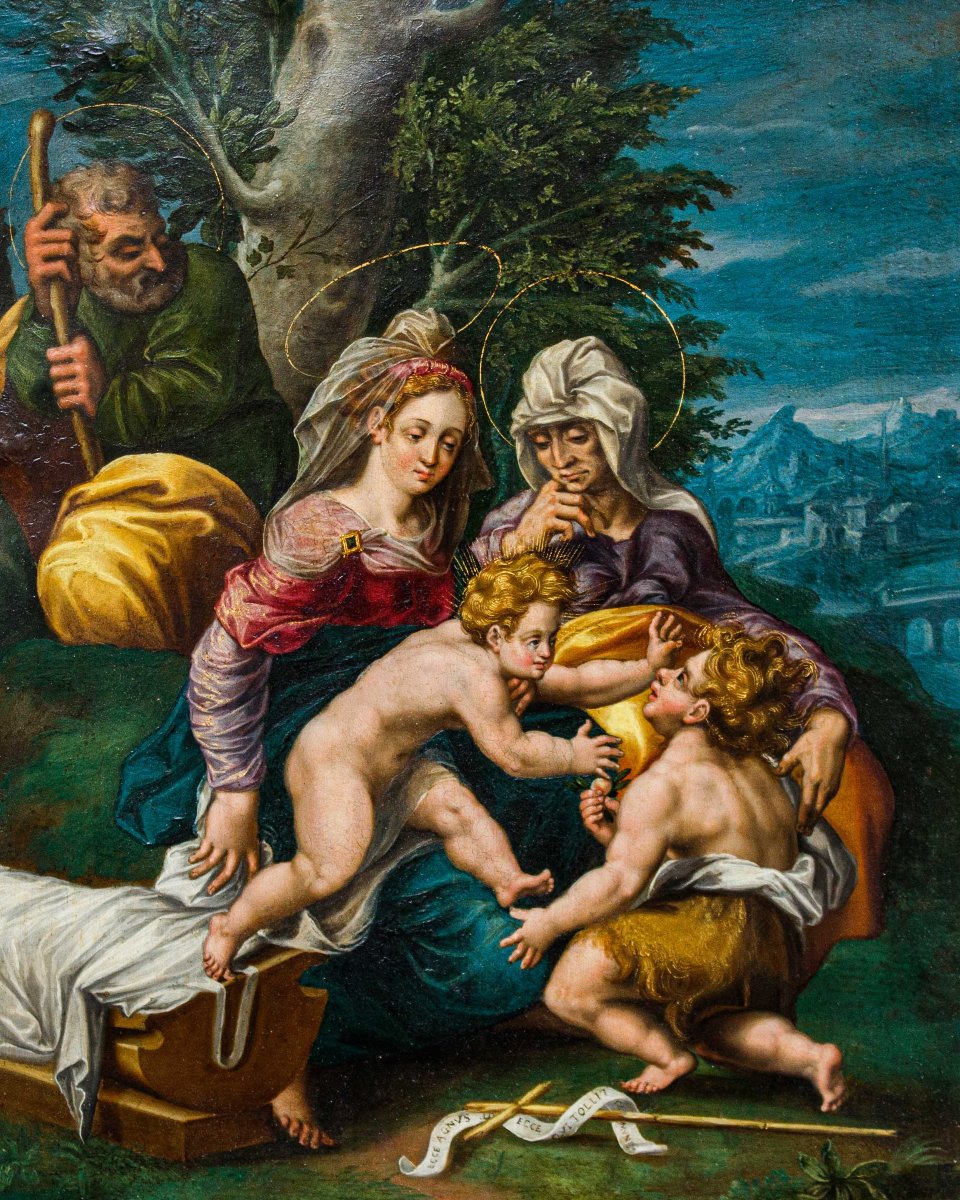

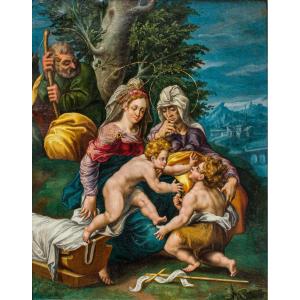













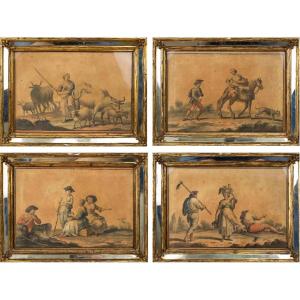


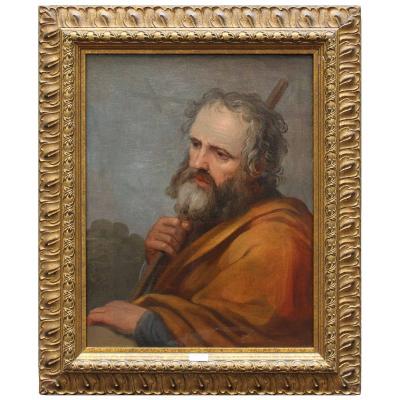






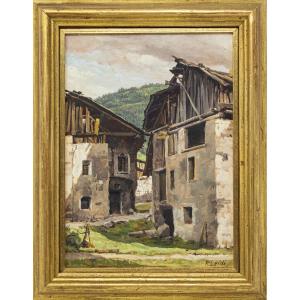


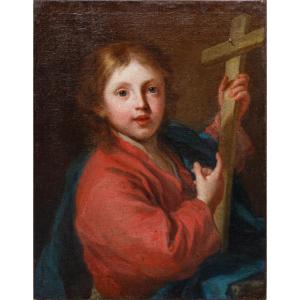






 Le Magazine de PROANTIC
Le Magazine de PROANTIC TRÉSORS Magazine
TRÉSORS Magazine Rivista Artiquariato
Rivista Artiquariato